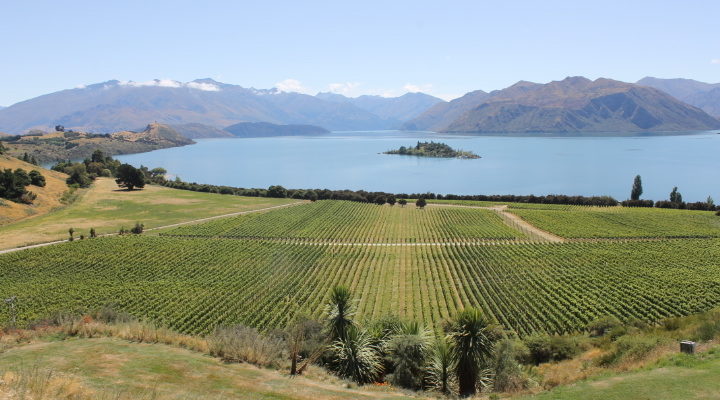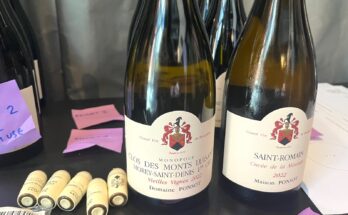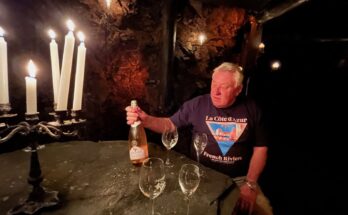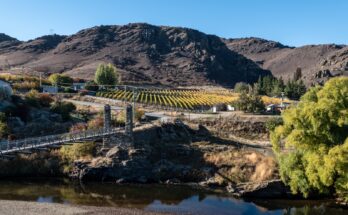I arrange to meet Jo Mills, one of the key backroom staff at Rippon, on a sensational day in mid February, at the winery in Wanaka. Rippon Cellar Door has one of the most famous views in the region – probably only knocked into second place by ‘that tree’. And even by vineyard standards – which to be fair are pretty often in stunning locations – it’s jaw-droppingly gorgeous. I wasn’t the only person who arrived through the gate on the gravel path, and just stood agape at it. Snapping back to reality, I found Jo and we basked in the sun for a few minutes. I asked about the history of the wine, and that view…
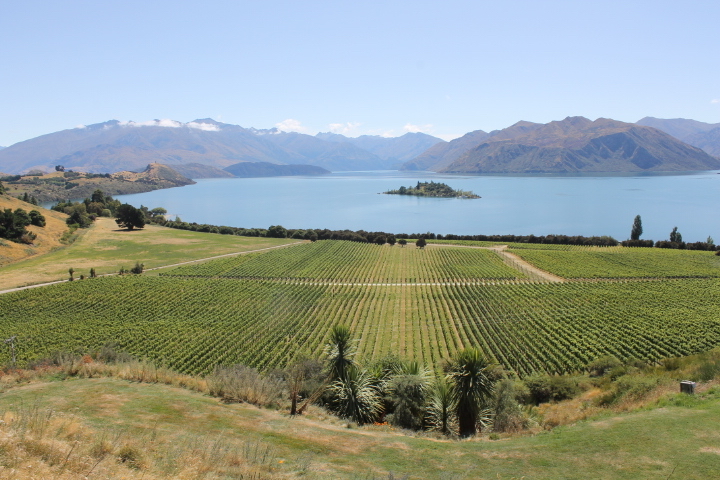
Jo: Rolfe and Lois, Nick’s parents, had been planning to build this building for quite literally thirty years. And the idea was that when we built this in 2011, was to bring everything up to the centre of the property and make it more efficient. Because our Cellar Door used to be down there, the wine store up there, the office over there – we were all over the place.
Our reasons for moving away from the old Cellar Door was to bring people out of the vines themselves, for the health and safety of the vines and because, while this is private land, this has become a very public view up here, one which visitors never saw when the Cellar Door was down below.
The plan is – what we really want to do – is build a new winery, but the winery alone doesn’t bring any more income in. And as a farm – whether you’re a grape farmer or a sheep farmer or a barley farmer – you’ve got to look at diversifying your income streams. It’s just part of your sustainability plans and keeping things going for the next generation.
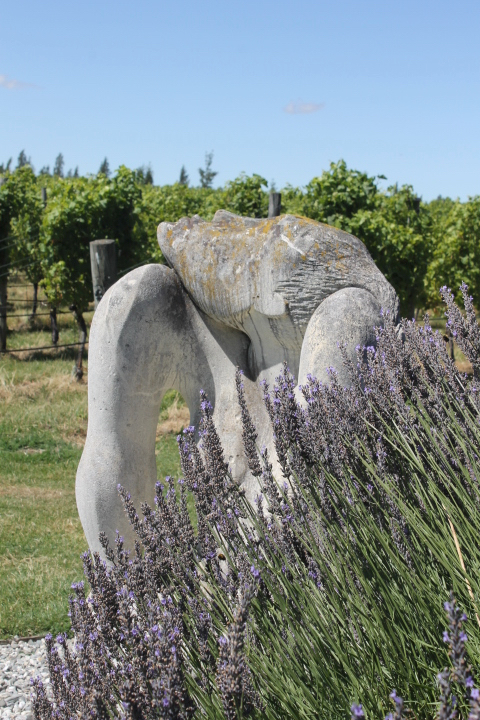
So how can we get more people onto the property? So, we’re looking at Events for the first time, but something that happens without compromising the core part of winemaking.
It’s interesting because way back, my sister-in-law did platters down below. But you know, pre-2006 which was my first year here, we just didn’t have the footfall. We opened at eleven and shut at five, in the summer. We closed for two months, and in our winter months we opened from 1.30 to 4.30pm. Now, all year round we’re open eleven to five. Even before the tide of tourists we’re now seeing coming in, when we opened this Cellar Door in 2011, we’d have days where you had no-one come in. So you’d either shut early, or you’d get one person come through and buy a bottle of sauvignon – wow!
Wanaka has erupted in the last five to ten years – certainly the last five years. So, offering cheese platters – that’s compromising our core business because we’re not restauranteurs. And when people come and expect a platter or something more… anyway… just to give you an idea – the Boxing day before last – in 2018, we had 230 people come through the Cellar Door – all un-booked because that’s how we rolled. Three of us were running tastings at the same time in there. And people waiting outside. It was hot. People were getting bored. People felt like they were on a conveyor belt.
And the land was suffering – and if we don’t look after that then we’ve lost, because if we don’t have the land, we’ve lost 120 years of farming. Our mental health was suffering, and we weren’t delivering the experience that we wanted to, and that visitors wanted.
There’s this incredible thing about viticulture that we’re in this unique position where we grow the grapes – we make the wine – we bottle the wine and we sell it. The man who grows the barley doesn’t necessarily mill it into flour, never mind package it and sell it. It’s a unique thing. As a team if you’ve done the work in the vineyard and in the winery – and suddenly out here the wheels are falling off, then we’ve let the whole team down. It took us over a year to implement it, but as of October we introduced a booking system. A lot of people are going ’what the heck are you doing?’ At a time when Domaine Thomson is opening a new tasting room, and Te Kano is, and Maude is opening for tastings – “why are you cutting yourselves off?”
We have to, to have a bit more control and give people the experience that we want to give. It’s been amazing. There’s been a bit of backlash, but again, once people hear it – they get it.
It’s a huge thing how Wanaka is struggling to cope with the numbers. We need sustainable tourism and we’ve got to be responsible. A responsibility to the land and to all those people who are coming to Wanaka, and are going to go and spread the word. When people come to an experience – the sale at the end is ours to lose. And that’s whether it’s a bottle of wine at Rippon; at Akitu; or a skydive or wherever the people are going.
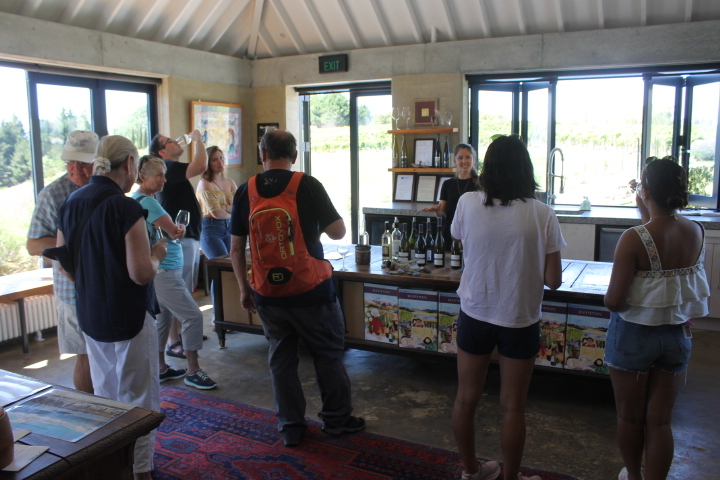
Our idea is that it’s calm, quiet and people get a moment to engage with the story. And for us, that’s the third phase of Rippon. Having gone all out, it’s a really fascinating time. Have you been to Gibbston Valley? It’s expanded with its new Lodge which is amazing; and they’ve identified it as a way to put themselves out there.
It’s exciting to see the coming of age of the region. It’s talked a lot about in terms of the wine, and the vines; but it’s actually in terms of the tourism as well. It goes hand in hand, but people don’t think look at that so much, because it’s like it is vulgar to talk about the end product? As purists, winegrowers, we talk about our vines and our wines; but actually a huge part of it is understanding the links. We’ll throw all our vineyard team out into the Cellar Door occasionally – which they hate!
I think that’s really what the future of Central Otago, in terms of visitor experience, is – an authentic story.
We’re blessed with a pretty good story; and although not everyone is fortunate to be fourth generation on their land – everyone does have their unique story. And they are genuine, not just a brand.
An odd example is that the biggest-selling Central Otago Pinot overseas – we don’t even know – it’s called ‘Squealing Pig’ and it sells in Australia for $20, and no-one knows about it. There’s a time and a place for that, and there’s been interesting discussions again recently whether should we have that. At the recent Pinot Celebration, Elaine Chukan-Brown made the really good point that ‘until she drank Liebfraumilch, she didn’t know Germany made wine’ And when she drank it, whether she liked it or not, she suddenly became aware of a place! And we dismiss the Squealing Pigs of the world as bottom feeders, but there is a place for those kind of wines. Not everyone can come in at a $65 price point. But, when you come here and you go to Maude, to Domaine Thomson, you feel it.
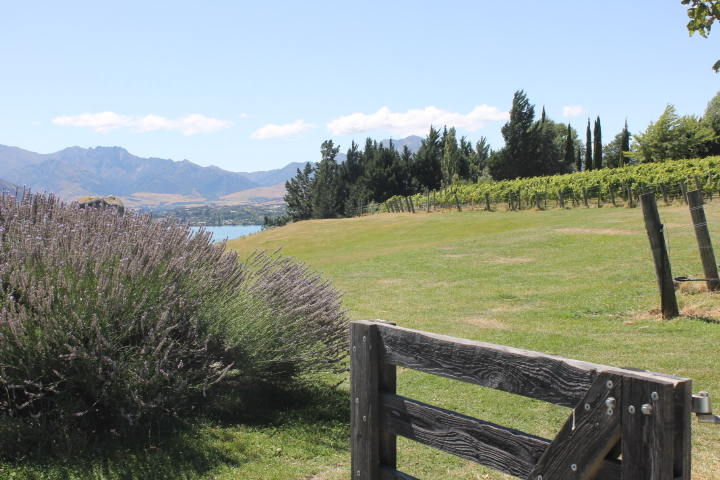
You just got 100 points off James Suckling? That was amazing, but you’ve got to be wary of hanging your hat too much on that sort of thing. That’s just one person’s opinion. There’s reaction online saying “why on earth did that get 100 points” and that sort of thing. One man’s 100 points is another man’s 70. Each to their own. It was amazing and I love that wine, don’t get me wrong. And it’s given us and the region recognition. There was a winery I used to work at in New Zealand, and they’d won an award many years earlier. And when I was there, they were selling three vintages later, and they were still talking about that wine as the “World’s best Pinot”. Well, that’s not strictly true is it.. and also – what makes the “World’s Best Pinot”? This is one opinion of the wines that were at this event.
Your husband is the winemaker? Yes – he hates the term! We’ve both lived and worked in France, and in France you’ve got the term “vigneron” which doesn’t translate over here but is effectively the idea of a ‘winegrower’ He is – he’s the central ‘ego’ of the property – in a positive sense of the word. We are all winegrowers – we have this idea of the winemaker in his winery (and it is generally a man) who is not necessarily out in the vines. Our Vineyard Manager, Shannon, she is every bit as much as the winemaker as everyone else. She spends a lot of time at harvest up in the winery. But Nick is the ‘overlord’ – at Rippon at least (laughs).
Nick’s Great-Grandfather, Percy, bought the land in 1912, and originally the Station was 34,000 hectares. It went pretty much all the way out to Alberttown, and out to Spotts Creek which is this side of Cardrona. You’d think there were no vines then, but it’s really interesting that when Lois was going through some old family letters, written in 1895, there’s a mention of a lecture that Romeo Bragato had given about planting in Central Otago. And Percy, who was involved in building the railways, looked at the financial feasibility of planting vines in Central Otago.
Rolfe, Nick’s father was a submarine lieutenant in WW2, and he spent time in the Atlantic, off the coast of Portugal – and saw the vines in the Douro. He had a lightbulb moment in terms of the possibility of planting here. But what we’ve concluded is that wine was on his mind anyway. Wine was always on the table, at a time when that was not the norm in New Zealand. In the early 80s no-one had planted south of Christchurch. You had Alan Brady planting in Gibbston, Annie Pinckney over that way – she was the only one of the originals who had any viticulture knowledge – you had the Grants and Burgess’ over in Alexandra.
No-one really knew what they were doing, and the advice was ‘stick to your goats’, but they didn’t. And they were given about 30 trial varieties from Te Kauwhata – sadly we don’t have the original lists; I’d love to know. There were 15 rows down in Tinkers Field. Our oldest vines are ’82 plantings and 80% are on their own roots. We don’t buy in any other fruit, so all fruit is from here. All of our wines are therefore Single Vineyard wines. Everything is done here except the bottling which is done in Cromwell.
But when Percy died, there were death duties – so half your assets, and all we had was land – went to the Crown. So we lost a helluva lot of land. We ended up down at 1000 hectares, and while were able to buy some of the land back, we had to sell land during the period of planting here. A lot of assets were tied up in stocks, so when the Stock Market crashed in the ‘80s, we lost everything. So what we’ve got now is about 15 hectares of vines, and about 30 hectares of farmland. Our cousins have got about the same, so 90 hectares is all that’s left of Wanaka Station.
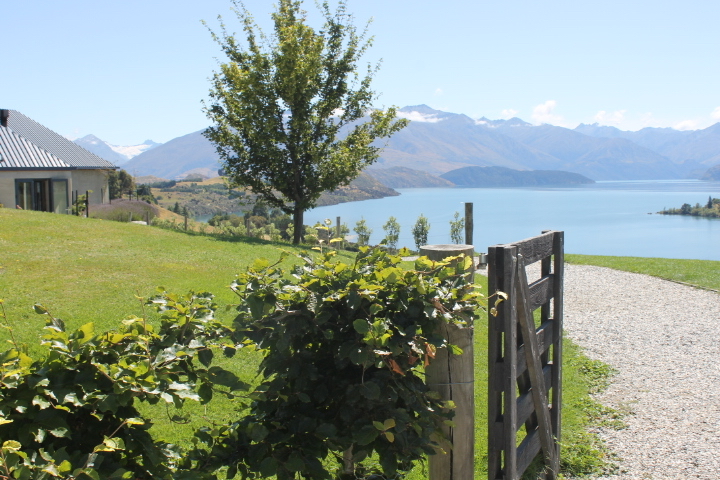
The only reason we grow here is because we’ve had it so long. About 15 years ago Nick and I looked at the possibility of doing something ourselves, just the two of us – up the valley. Beautiful land, but prime real estate. It’s sad because you see these spots and think ‘vines would be amazing here’ but financially it doesn’t stack up any more. Wanaka is ever-encroaching, and it becomes a little haven for us.
For the next generation we hope to pass on our understanding of how fortunate we are to have this moment on the land; and instil a love of the land.

